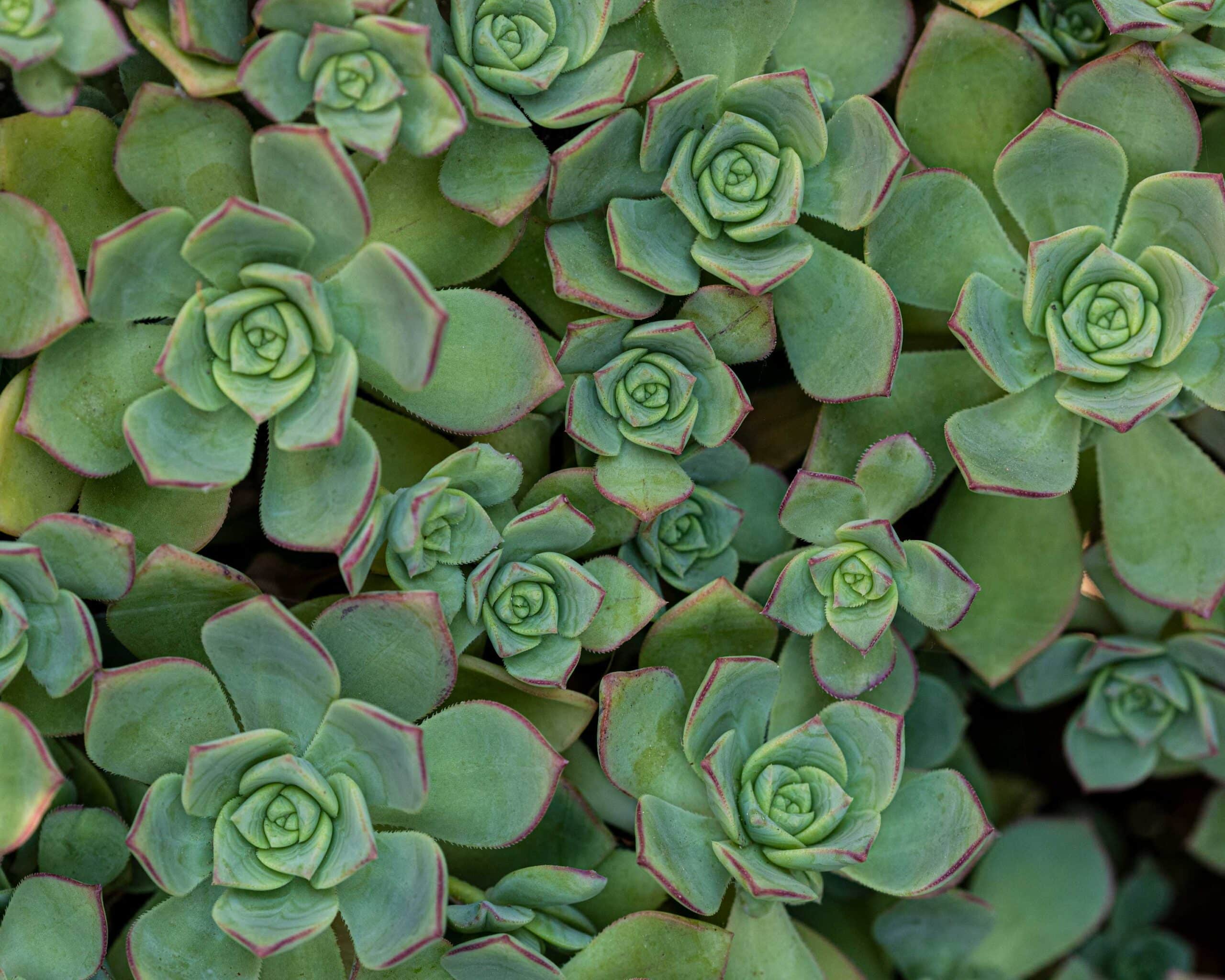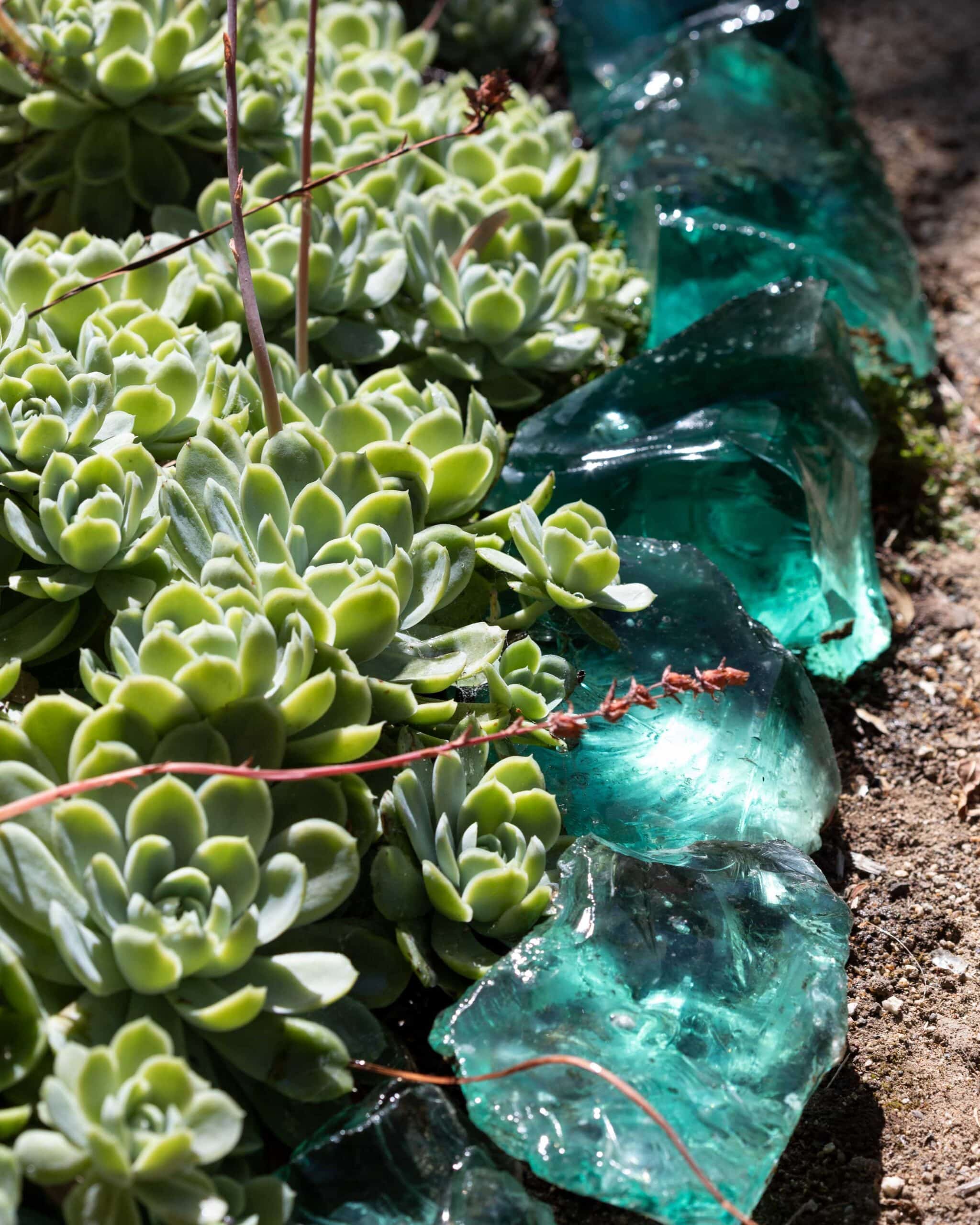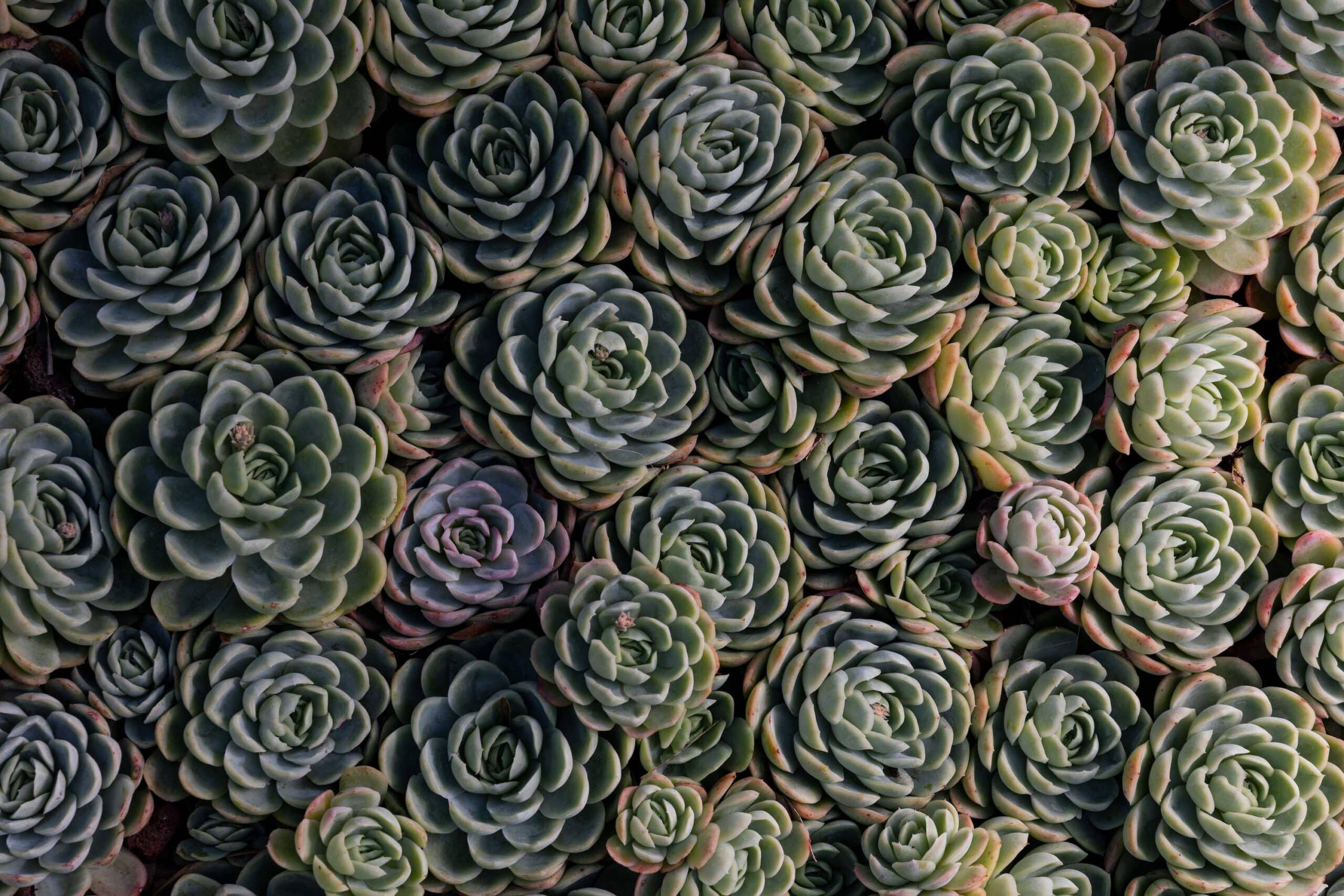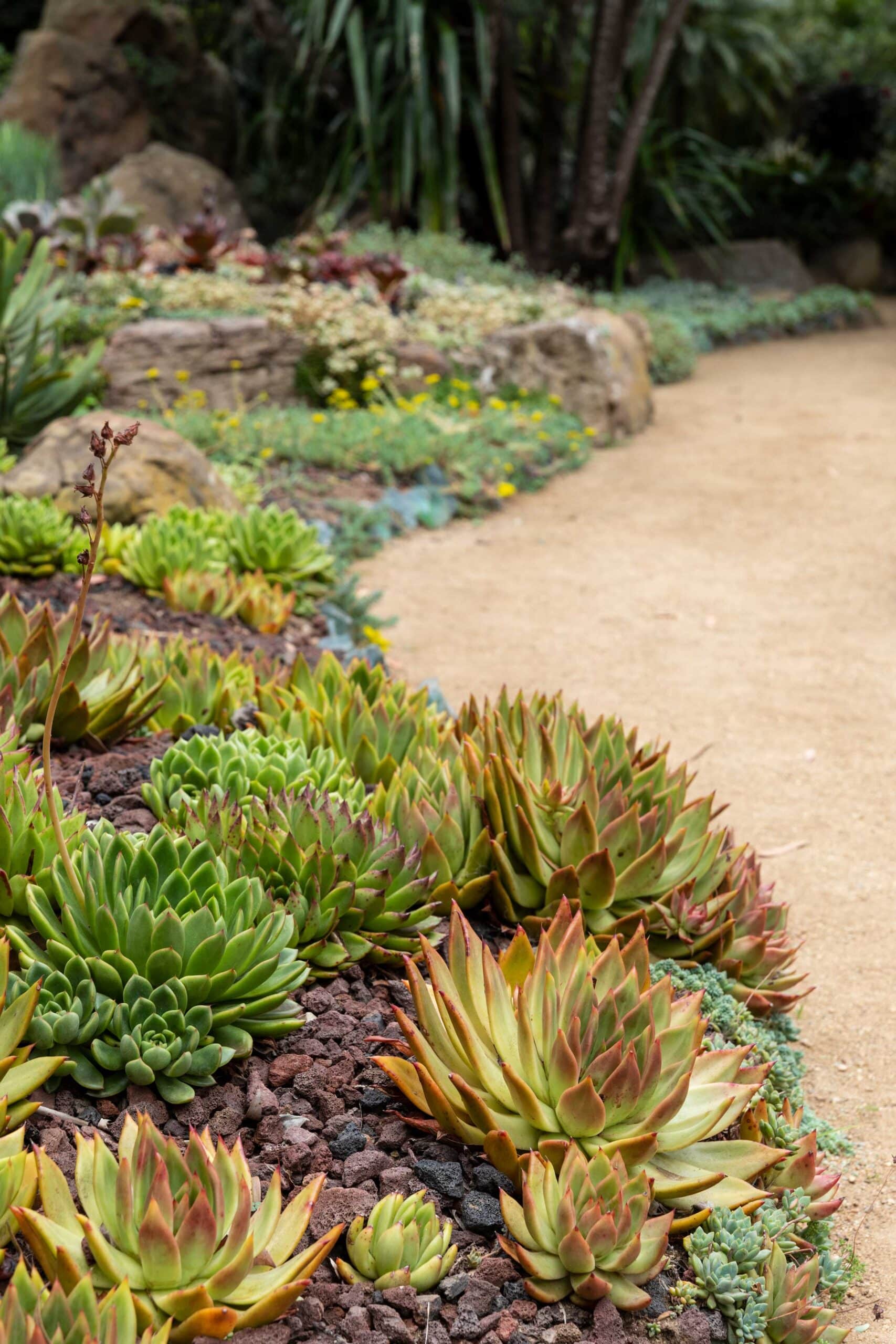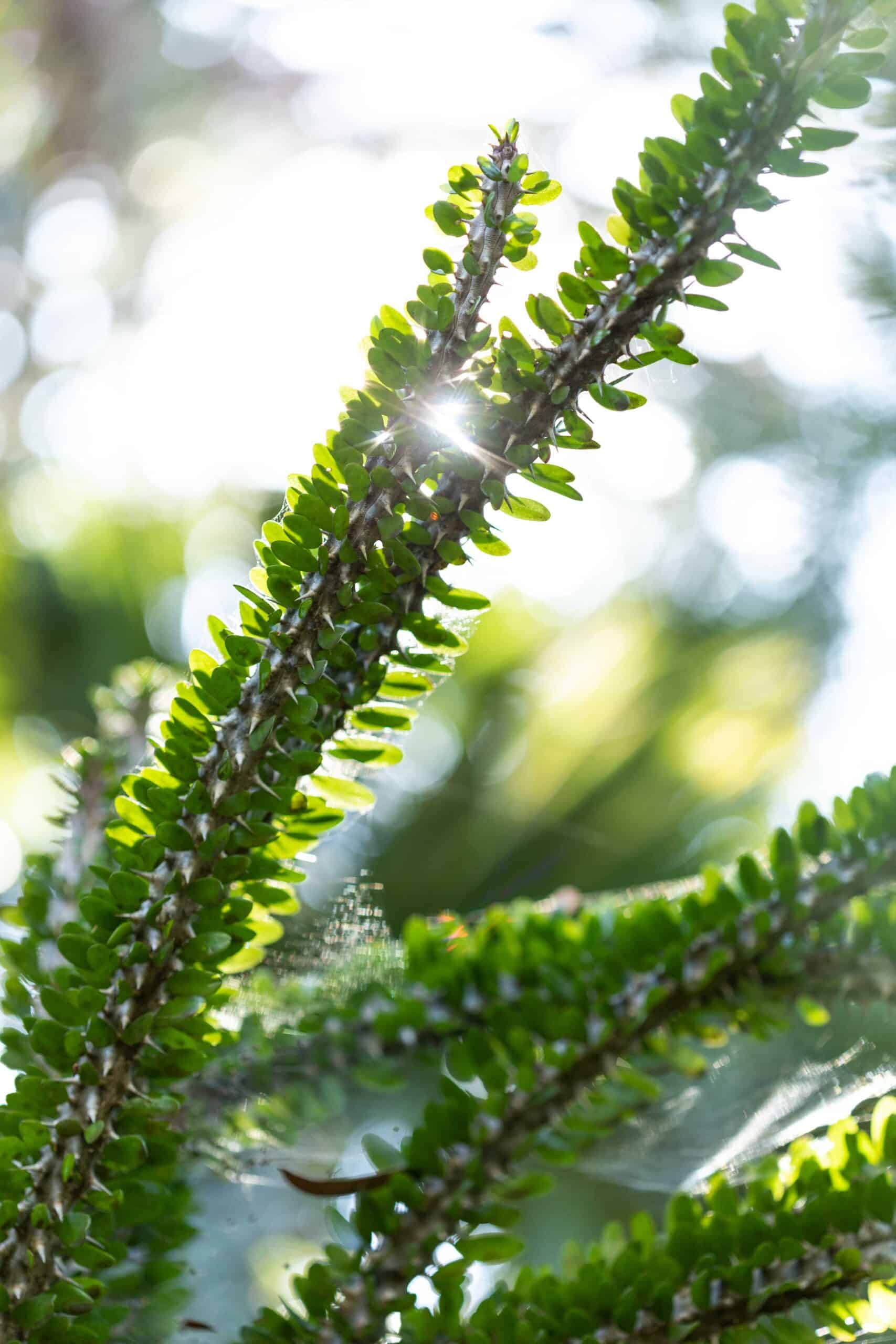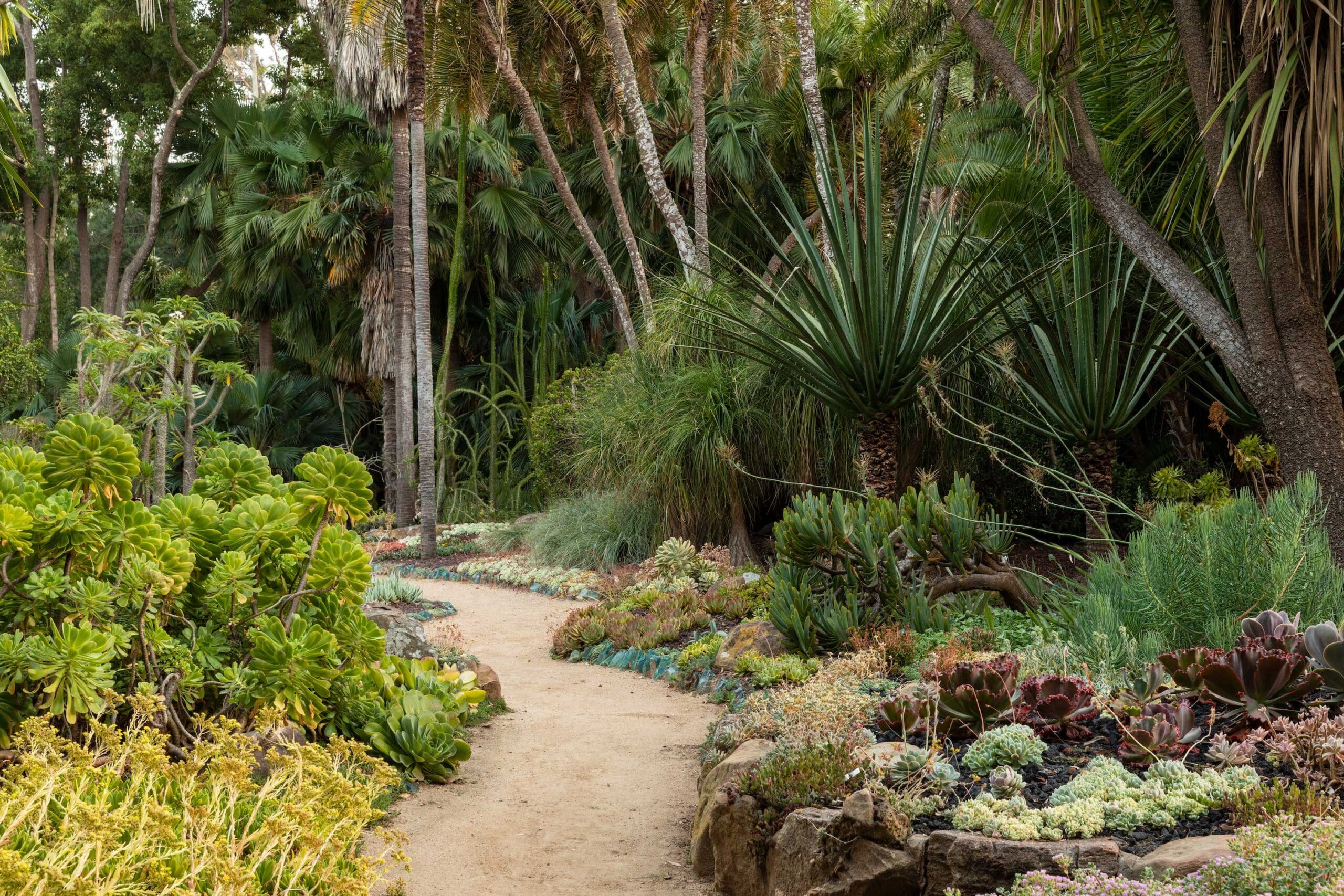Succulent Garden
By the 1950s, Lotusland started attracting the attention of serious succulent enthusiasts
Succulent Garden
Scattered throughout Lotusland’s enormous collection of succulents, visitors will discover a series of lighthearted cherubs from Madam Ganna Walska’s Paris estate and feel transfixed by shimmering glass slag lining the paths.
the
Noteworthy
Features
Cherub Statuettes
Madame Walska had a fondness for situating artifacts among her plants, such as statues, minerals, and coral. Several of the Succulent Garden statuettes represent classic mythological characters from antiquity, such as a childlike Pan, Greek god of the wild, and two statuettes of young Bacchus, the Roman god associated with wine.
Pachypodium succulentum
Native to South Africa, this strange looking plant is supremely adapted to its hot, dry environment. Its half-submerged tuberous stem allows it to survive even the harshest conditions by storing water. A fattened stem or root for nutrient or water storage is known scientifically as a caudex.
Adaptations for Drought
Succulents are adapted to survive periods of drought by storing large amounts of water. See if you can identify where each succulent is storing its water. Look for thick, fleshy leaves and enlarged stems or roots. These capabilities aid survival, but also make succulents an ideal target for predation by thirsty wildlife. Many succulents defend themselves against being eaten by having spines, poisonous sap, or camouflage.
Echeveria elegans
These rosette succulents are native to Mexico. They get their common name, hens and chicks, from the tendency for baby plants, known as offsets, to be produced around the mother plant. Offsets are clones of the parent plant, therefore seed dispersal is still vital to produce the genetic variability so important to the evolution and long-term survival of the species.
Design Inspiration
Madame Walska’s stonemason, Oswald Da Ros traveled all over California to hand-select stones, minerals, and crystals for the Garden. Most famously, Madame Walska used blue slag glass that Da Ros sourced from the old Arrowhead Water Company to line many paths.
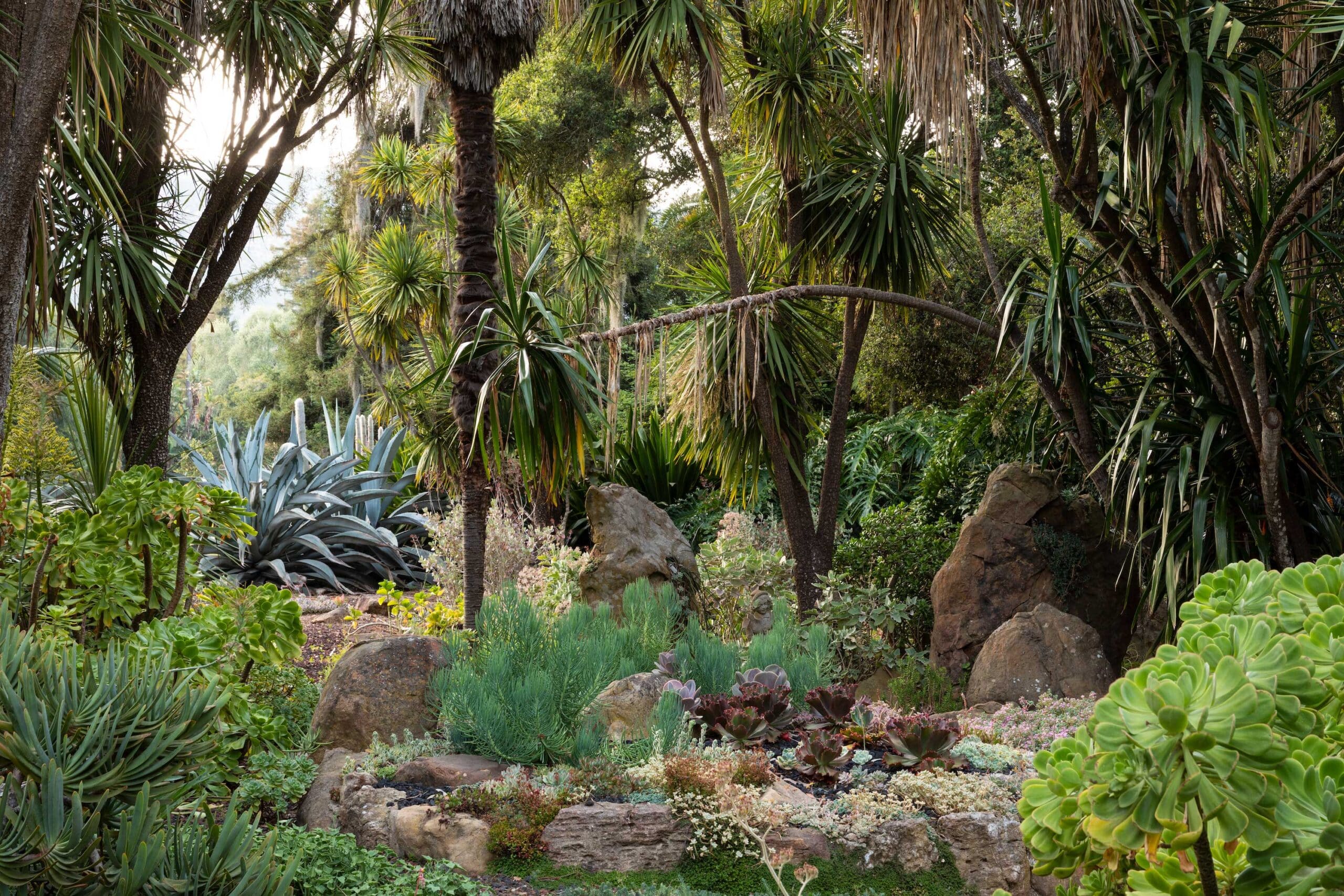
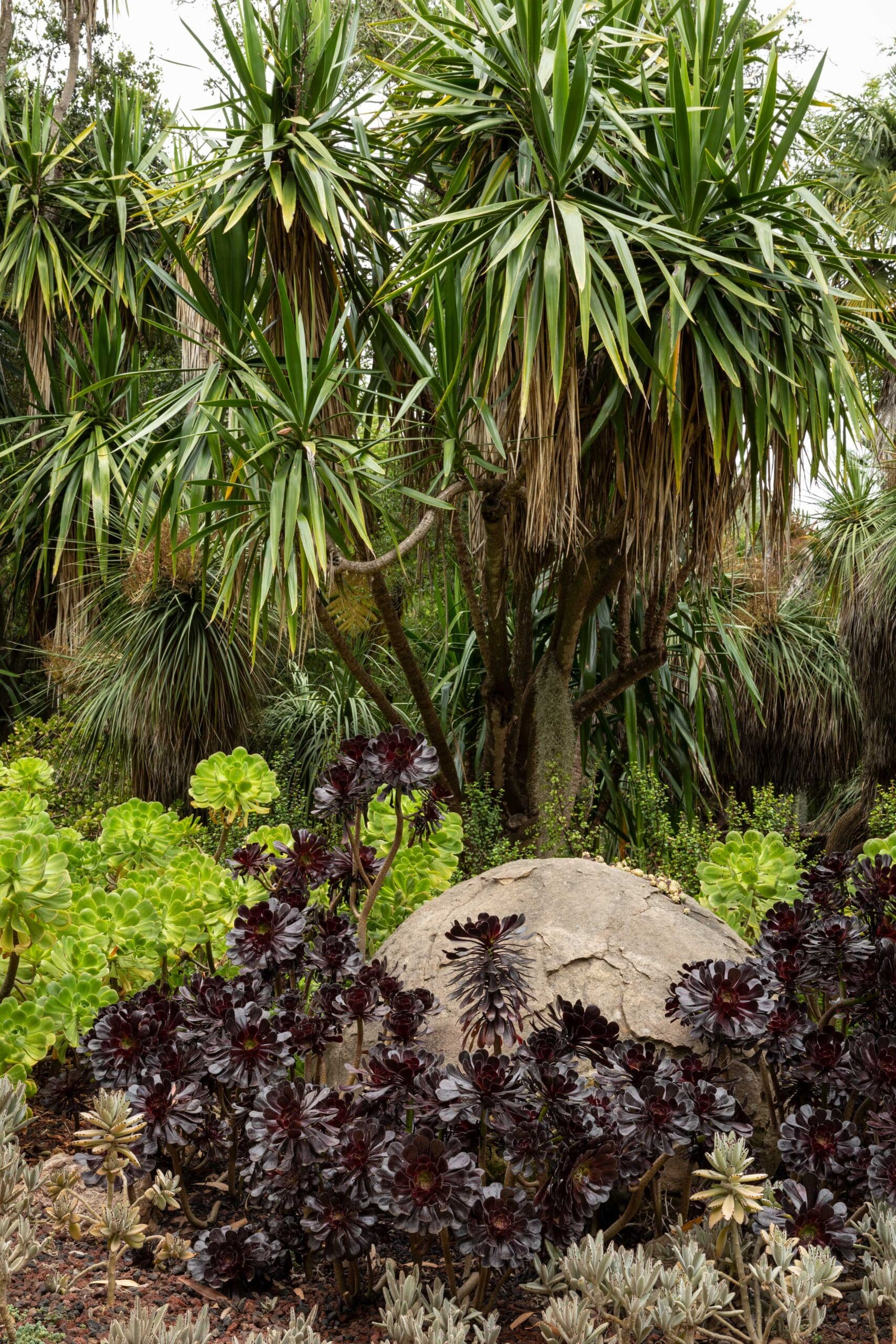
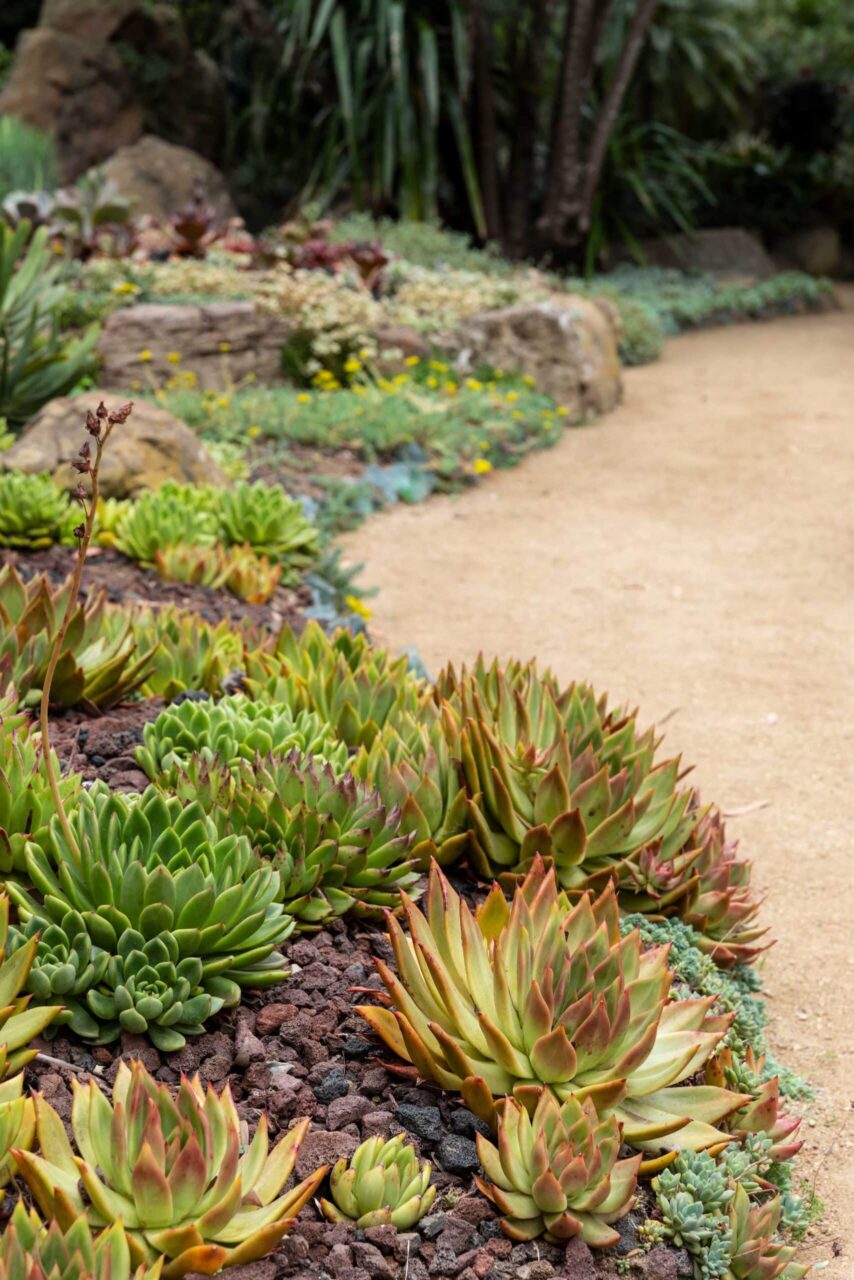
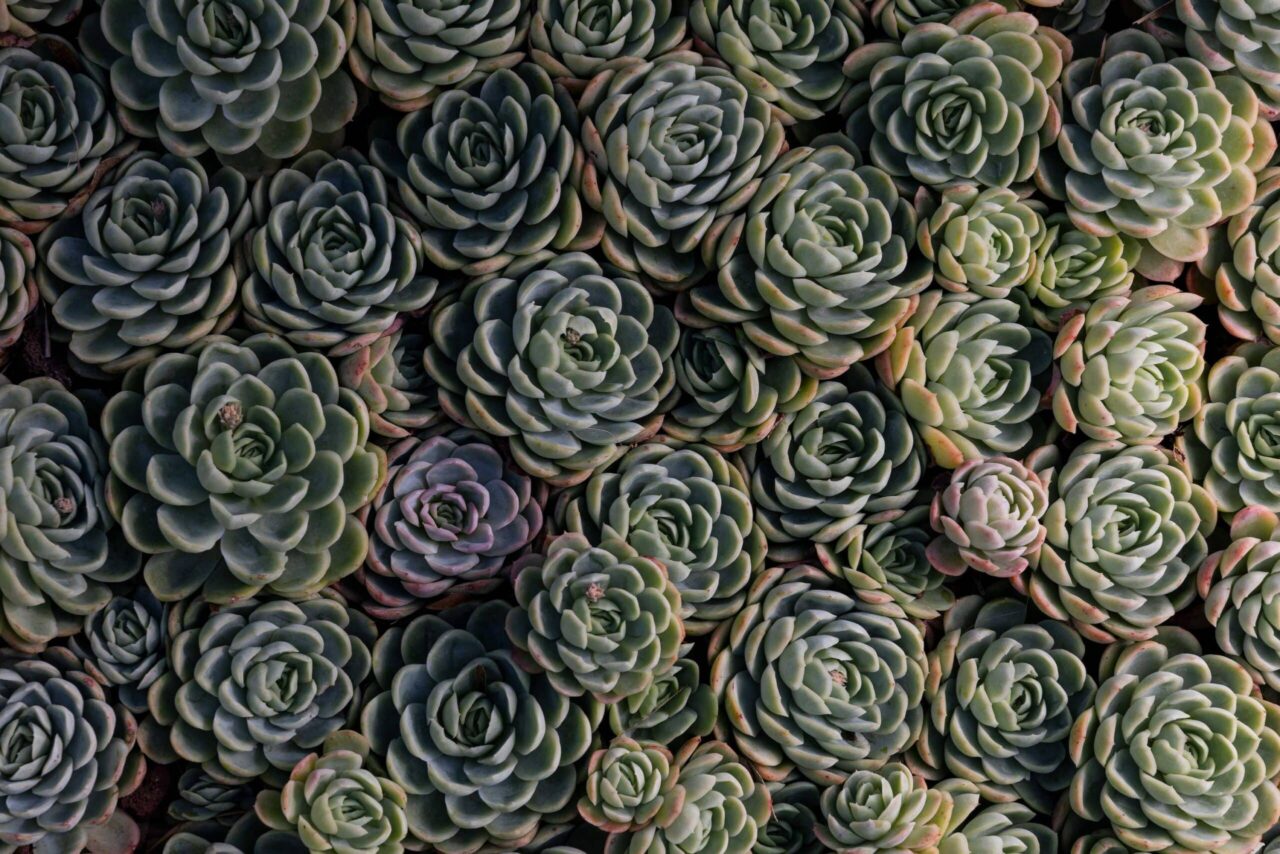
DID YOU KNOW?
Thousands of students have been gifted a succulent on their school field trips to Lotusland. With each gift, they are reminded of their responsibility to care for the environment.
the
History
Succulent Journal
By the 1950s, Lotusland started attracting the attention of serious succulent enthusiasts, including Charles Glass, editor for the Cactus and Succulent Journal. Glass and his colleague Robert Foster saw the importance of Lotusland for current and future students of botany. Worried the Garden might not survive beyond Madame Ganna Walska’s death, they came to Lotusland to work, starting with a 1973 renovation of the Succulent Garden. Originally created in the 1940s, the Succulent Garden had drainage issues. To benefit the health of the succulents, Glass and Foster added materials to the soil to improve drainage. This was one of many significant projects the pair undertook to enhance the Garden and grow the living collection. Lotusland continuously experiments with new plant materials to expand its succulent collection.


